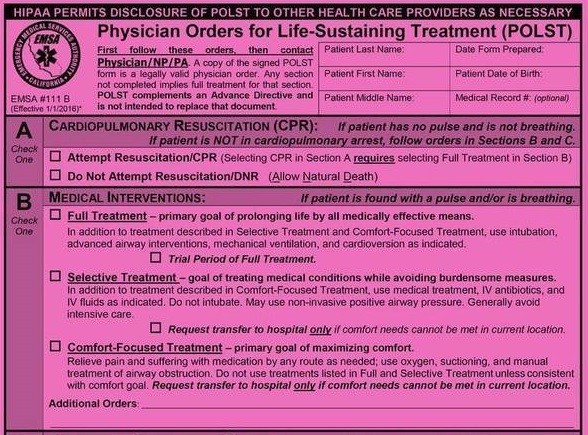Dying with dignity is a human right, and cannabis could help

By Mary Biles
End-of-life care is one of the less frequently discussed uses of medical cannabis. After all, most of us who turn to cannabis, want to continue living, right? And yet, thanks to the ability of cannabis to ameliorate the heavy symptom burden experienced by patients with minimal side effects, palliative care is perhaps the area of medicine that would most benefit from its clinical use.
Dying is a journey all of us will inevitably take, however how to ‘die well’ is something we tend not to consider. Dignity with dying is only possible, I believe, when there is a certain amount of consciousness and acceptance of the process. Something that a skinful of morphine doesn’t allow. But cannabis does, and I experienced this for the first time with a friend’s mother.
As Jose neared the end of her life after battling pancreatic cancer, morphine failed to control her pain, leaving her confused and unable to connect with loved ones. Thanks to an open-minded doctor who recommended cannabis oil, the last few weeks of her life became the gift her family longed for. The pain no longer troubled her, the anxiety lessened, sleep returned, as did her appetite. Not only that, Jose remained fully lucid until moments before she died.
This changed me forever and it’s why I’m sitting here today writing about cannabis.
Holistic medicine
Sadly, when my mother became terminally ill with advanced cancer, this option was not available in the UK. Sure, I had a few offers from my cannabis contacts. But for an 82-year-old Irish ex-nurse, trusting a funky tasting oil (that I couldn’t say for sure how much to take) over the pharmaceutical meds prescribed in precise dosages was never going to happen.
Instead, I found myself administering a list of medications that just kept growing and growing as the disease progressed. This included morphine for the pain (which incidentally my mum couldn’t tolerate), antiemetics for nausea, laxatives for the constipation caused by both the cancer and the pain medication, as well as Lorazepam for the middle-of-the-night agitation.
The frustration was overwhelming. I knew that instead of the sledgehammer approach to her symptom control, a far more holistic, person-centred alternative existed that could not only ease her pain, take the edge off her anxiety and agitation, stimulate her appetite and help with the nausea, but also allow her to be present for the time that remained.
What is Palliative Care?
According to the World Health Organization, palliative care is “an approach that improves the quality of life of patients and their families facing the problems associated with life-threatening illness, through the prevention and relief of suffering by means of early identification and impeccable assessment and treatment of pain and other problems, physical, psychosocial and spiritual.”
In other words, palliative care encompasses end-of-life care, but a patient receiving palliative care is not necessarily approaching death.
However, when a patient enters the end-of-life stage in a hospice setting, the emphasis on quality of life means rules often get bent in a bid to fulfil a dying patient’s wishes and beliefs. Dogs and family pets are welcome guests in a patient’s room, and a glass of wine is not unheard of, if that’s what the patient wants. So why not allow access to medical cannabis if that will help ease the suffering of a dying patient?
In some countries and states in the US, palliative and end-of-life care is considered a qualifying condition for the prescription of medical cannabis.
Using Cannabis in Palliative Care
Since 2007, the Israeli Ministry of Health has approved medical cannabis for palliative care in patients with cancer. This led to a prospective study analysing the safety and efficacy of cannabis in 2970 patients and the responses were overwhelmingly positive.
Ninety-six percent of patients who responded in the 6 month follow-up reported an improvement in their condition, 3.7% reported no change and 0.3% reported deterioration in their medical condition. Furthermore, while only 18.7% of patients described themselves as having good quality of life prior to cannabis treatment, 69.5% did six months later. Tellingly, just over a third of patients stopped using opioid pain medication.
While observational studies such as these suggest cannabis can improve symptoms commonly found in advanced cancer, as well as improving quality of life, in practice physicians often feel insufficiently informed to prescribe cannabis to their patients.
A 2018 survey found that of the 237 US oncologists interviewed, 80% conducted discussions with their patients about cannabis, while only 30% actually felt they had enough information.
However, an encouraging 67% viewed cannabis as a helpful additional way to manage pain, and 65% said that it was equally or more effective than the standard treatments for the rapid weight loss often found in advanced cancer. And yet, only 45% of them actually prescribed cannabis to their patients.
These discrepancies mean that even in countries where cannabis can legally be prescribed for palliative care, many physicians prefer to stick to the usual methods of symptom control.
A Physician’s View
Claude Cyr, MD, a Canadian family physician and author of “Cannabis in palliative care: current challenges and practical recommendations,” believes palliative care is uniquely suited to cannabis.
“If we’re going to integrate cannabis products in medicine,” he told Project CBD, “palliative care is the best port of entry because of the fact that doctors have more time, and patients also have the time to deal with possible issues of the medication.”
However, in order for cannabis to fulfil its potential in palliative care, Dr. Cyr believes a shift in how physicians view symptom control is needed.
“What seems to be coming through with the research for symptom control,” says Cyr, “is that cannabis is mildly effective for pain, mildly effective for nausea, mildly effective for insomnia and anxiety. It doesn’t treat any one of these conditions dramatically better than the other medications that we have. So, many physicians are like ‘why would we take a medication that is mildly effective when I can take a much more incisive approach with specific symptoms.’ Instead of saying ‘Do you have a bit of pain, a bit of anxiety, a bit of insomnia, a lack of appetite and a bit of nausea? So why don’t we start with something that’s mildly effective for all that and then we’ll be able to work on more specific symptoms in the long run’.”
Cyr is also critical of fellow physicians’ tendencies to rely on clinical evidence while dismissing the validity of their patients’ positive experiences.
“Palliative care is a specific situation where we can actually put into question the core philosophy of medicine which is the evidence based paradigm. I think physicians need to stop obsessing over the evidence when their patients are dying and clearly telling them, ‘I’m really enjoying this, I’m getting huge benefits from this, I’m sleeping better, I’m eating better.’ But the physicians are nodding their heads and saying, ‘I hear you, but I can’t accept this because I’m still lacking evidence.’
“But I think there is enough data out there to convince physicians that it’s safe for palliative care patients, and it’s predictable.”
Psychoactivity in palliative care
Cyr urges doctors to find peace with the idea that cannabis is psychoactive, which he believes could actually help patients process the existential anxiety often experienced at the end of their lives.
“When you look at the studies of psychedelics in depression and existential anxiety in cancer patients, some of these results have been dramatic,” says Cyr. “Although cannabis isn’t a true psychedelic, there are some similar experiences that patients tell us about.
At smaller doses patients experience a psycholytic effect, a lowering of the defenses allowing people to explore other aspects of their psyche, and that’s when they start making connections between different aspects of their reality.”
THC’s ability to reduce activation of the default mode network, the area of the brain involved in cognitive processing and where our ego or sense of self is thought to reside, could also potentially bring a sense of peace to dying patients.
Cyr explains: “Existential anxiety is rooted in the loss of the self, but when you can dissolve the ego temporarily and you realize it’s not all about me, that can be liberating.”
For the last fifty years, activists have been campaigning for the right to use cannabis to treat their health conditions in order to be well. This must also be extended to using cannabis to maintain quality of life in life-threatening illnesses, and when this no longer becomes possible, to die well and with dignity.
In memory of Jose and Agnes.
Complete Article ↪HERE↩!









